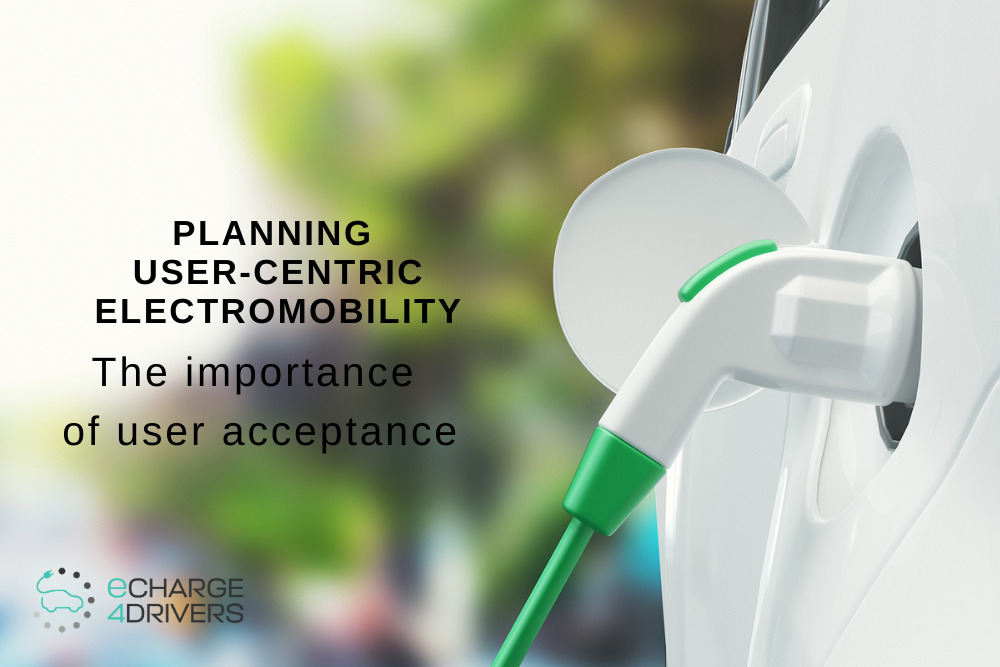On 3 November, eCharge4Drivers joined sister Horizon-2020 project, USER-CHI, for a webinar discussing the future of electric charging infrastructure, and the importance of considering user needs when designing and implementing policy agendas. The webinar, organised in cooperation with POLIS Network’s Mobilising Mobility Series– brought together academics, urban policy actors, and private stakeholders for a conversation which shed light on how users are steering uptake of electric vehicles.
As electric vehicles (EVs) play an increasingly prominent role in sustainable urban mobility agendas, the race is on to design effective, efficient, and accessible EV infrastructure. Cities and regions across Europe- and indeed the globe- are seeking to expand and enhance their EV provisions. However, as many are quickly discovering, the long-term sustainability of such infrastructure hinges on user acceptance.
eCharge4Drivers and USER-CHI are two projects which are co-creating and demonstrating new and integrated electric charging solutions across Europe and the Trans European Network-Transport (TEN-T) corridor. Both projects bring together local authorities and private stakeholders to help design successful charging services which use innovative business models.
The webinar, moderated by Dr. Lieselot Vanhaverbeke of VUB, hosted expert speakers Juan Gimenez Pla from Instituto de Biomecánica (IBV), Javier Julve from Electromaps, and Eurocities’ Matilde Chinellato.
First Gimenez Pla presented preliminary findings from USER-CHI’s survey conducted in six European countries- with over 2,500 respondents- in July 2020, which explored EV and non-EV user opinions, demands and usage patterns.
“We asked current EV drivers if they would buy another EV as their next car, to which 90% responded yes” said Gimenez Pla. “And interestingly, over 45% current internal-combustion-engine vehicle (ICEV) drivers, said they ‘probably would’ consider an electric option next.”
However, despite concern amongst the latter group regarding battery life, Gimenez Pla declared that the market for EVs is substantial, and growing. Nevertheless, the survey highlighted remaining concerns for accessibility of charging infrastructure.
“Users need better infrastructure, which today is not yet available,” he said.
This was reiterated by Javier Julve, who also presented findings from Electromaps’ recent survey. “There was a clear lack of knowledge about EV charging, which needed to be confronted,” said Julve, who’s presentation provided a useful insight socio-economic and geographic distribution of current European EV users, as well as the difficulties created by the current complexities involved with locating and registering for charging points in many cities.
eCharge4Drivers now plans to conduct their own survey on EV usage. The survey, to be conducted in 6 cities and several additional regions, will provide a comprehensive understanding of EV (and non EV) users, their demographic, motives, charging behaviours and satisfaction with services. Dr. Vanhaverbeke introduced the study.
“This is an explorative study,” she said, “examining current trends to see how we can design infrastructure in such a way to fulfil user expectations.”
The webinar generated interesting discussion amongst the panel and the audience, so many that the webinar began to run over time!
“Current EV conversations are around cars, but a large proportion of current usage is from light EVs like bikes, how are these needs being unified?”
“There is a focus on combining the infrastructure” responded Dr. Vanhaverbeke. “We try to create synergy between all users in our demonstration projects, as we know simply addressing car needs will not solve our urban mobility problem!”
The information shared, and ideas discussed during the webinar are essential for policy makers and manufacturers investing in new charging technology and services.
View the full webinar here.
